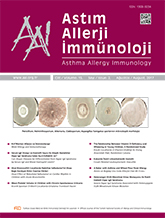


Objective: Nebulized beta agonists are being used in acute bronchiolitis treatment, but there is no consensus on the efficacy of this regimen. The purpose of this study was to investigate the electrocardiographic (ECG) effects of nebulized salbutamol in children with acute bronchiolitis.
Materials and Methods: The study was conducted with 80 children aged 1 month to 2 years who presented to our pediatric emergency department (ED) with a diagnosis of acute bronchiolitis. Patients were randomly assigned to two groups equal in number. Group I was given one dose of nebulized salbutamol (0.15 mg/kg/dose) and Group II three consecutive doses of nebulized salbutamol (0.15 mg/ kg/dose) at 20-minute intervals. ECG measurements were assessed at the start of the ED visit and after nebulized salbutamol in both groups.
Results: Baseline demographics of the two groups were similar. Heart rates were significantly higher in both groups after nebulized salbutamol in comparison to the initial evaluation.(Group I 155.25 vs. 166.35 beats/min; p=0.0001; Group II 158.20 vs. 166.05 beats/ min; p=0.009). PR intervals were also significantly shorter in both groups (Group I: 102 vs. 98 ms, p=0.013; Group II: 105 vs. 100 ms, p=0.001). The mean QTc intervals were longer in Group II patients compared to Group I after nebulized salbutamol (384.75 vs. 395.13 ms; p=0.031). There were no significant differences in the other electrocardiographic parameters between the two groups (p> 0.05).
Conclusion: This study demonstrates that there were no differences in the ECG effects of single or three doses of nebulized salbutamol in children with acute bronchiolitis. However, salbutamol can cause Q-T interval prolongation after 3 doses. Therefore, we suggest that these patients should be considered for closer monitoring during administration of nebulized salbutamol.